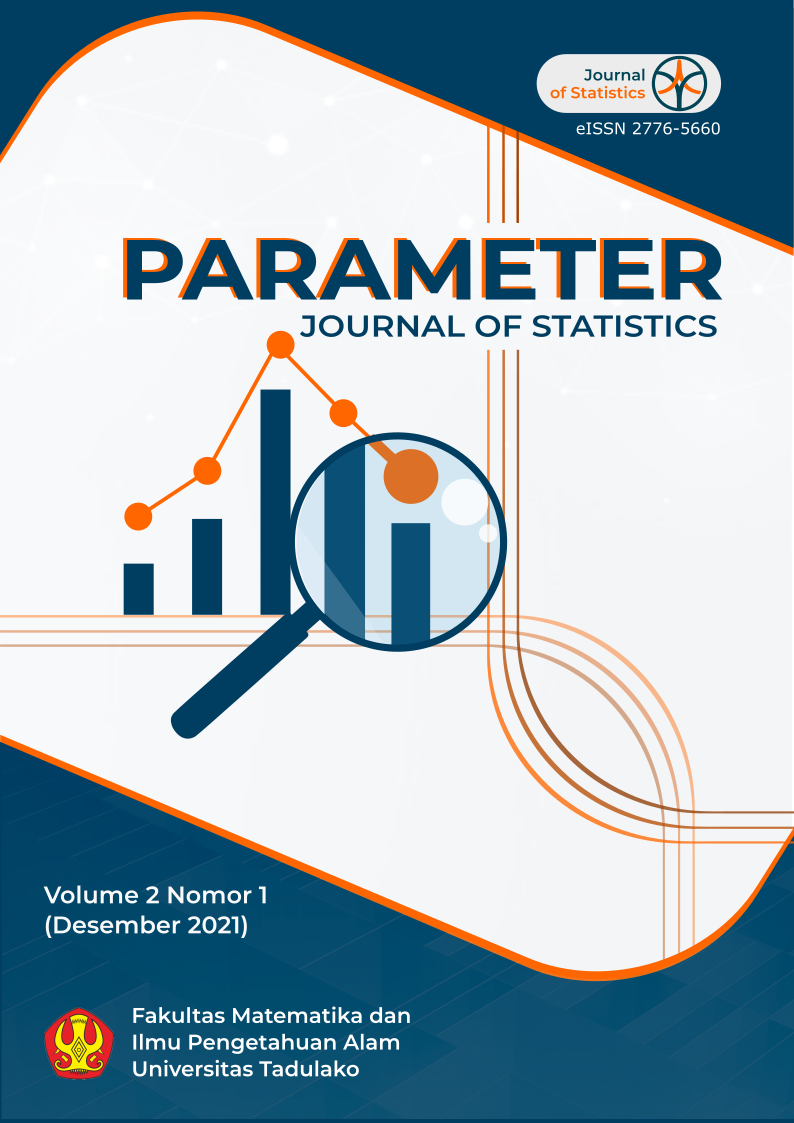Main Article Content
Abstract
Poverty is still a problem in Indonesia, especially in underdeveloped areas. Underdeveloped areas are areas where the region and its people are less developed than other regions on a national scale. The classification of disadvantaged areas is determined by the president in the Presidential Regulation of the Republic of Indonesia Number 63 of 2020 concerning the Determination of Underdeveloped Regions of 2020-2024. Various policies need to be set by the government to overcome poverty in underdeveloped areas. Program planning strategies may be different for each region. Therefore, in order to achieve an optimal implementation of poverty alleviation programs, it is necessary to group the districts covered in underdeveloped areas in Indonesia based on poverty indicators. The data used is macro data from the characteristics of each region in disadvantaged areas obtained from regional publications in the figures for each district. From the results of the analysis of k means clustering formed three groups with different characteristics in each cluster. In cluster one, the focus of government policies is on employment and sanitation aspects, cluster two is on health, education, and employment aspects, cluster three is on all aspects because cluster three is the area with the highest percentage of poor people compared to the other two clusters. The high percentage of poor people is also followed by other poor aspects.
Keywords
Article Details

This work is licensed under a Creative Commons Attribution-ShareAlike 4.0 International License.
References
- BAPPENAS. (2004). Rencana Pembangunan Jangka Panjang Nasional 2005-2025. Jakarta: Badan Perencanaan Pembangunan Nasional
- Badan Pusat Statistik. (2021). Daerah Dalam Angka 2021. Jakarta: Badan Pusat Statistik
- Chusna, H. A., & Rumiati, A. T. (2021). Penerapan Metode K-Means dan Fuzzy C-Means untuk Pengelompoan Sekolah Menengah Pertama (SMP) di Indonesia Berdasarkan Standar Nasional Pendidikan (SNP). Jurnal Sains dan Seni ITS, 9(2), D216-D223.
- Dowling, J. M., & Valenzuela, R. J. (2010). Economic development in Asia. Singapore: Cengage Learning.
- Febrianti, A. F., Cabral, A. H., & Anuraga, G. (2018). K-Means Clustering Dengan Metode Elbow Untuk Pengelompokan Kabupaten Dan Kota Di Jawa Timur Berdasarkan Indikator Kemiskinan.
- Harniaty. (2010). Program-program Sektor Pertanian yang Berorientasi Penanggulangan Kemiskinan. Bogor: Pusat Analisis Sosial Ekonomi dan Kebijakan Pertanian Departemen Pertanian.
- Kurniawan, D. E., & Fatulloh, A. (2017). Clustering of Social Conditions in Batam, Indonesia Using K-Means Algorithm and Geographic Information System. International Journal of Earth Sciences and Engineering (IJEE), 10(05), 1076-1080.
- Prastyo, A. A., & EDY YUSUF, E. Y. (2010). Analisis Faktor-Faktor Yang Mempengaruhi Tingkat Kemiskinan (Studi Kasus 35 Kabupaten/Kota Di Jawa Tengah Tahun 2003-2007 (Doctoral dissertation, UNIVERSITAS DIPONEGORO).
- Republik Indonesia. (2020). Peraturan Presiden Republik Indonesia Nomor 63 Tahun 2020 tentang Penetapan Daerah Tertinggal Tahun 2020-2024
- Sharp, Grimes, P. W., & Register, C. A. (2009). Economics of Social Issues (19th ed.). McGraw-Hill/Irwin Education.
